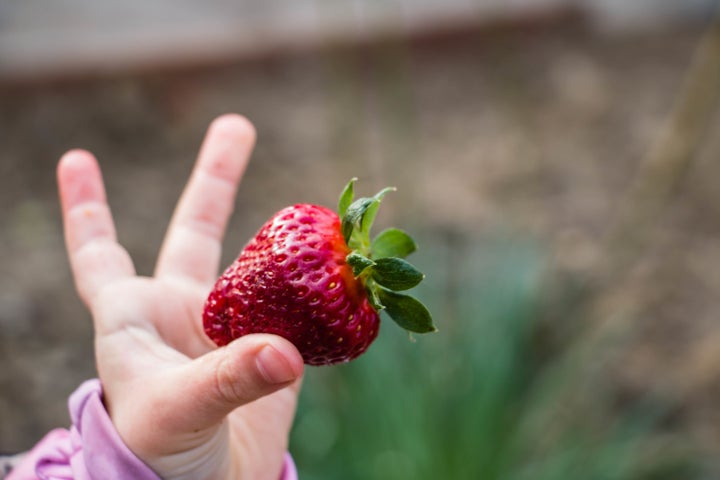Advances in Food Allergy Treatment
"There haven't really been any major advances in treatment [of allergies] since epinephrine."
"It took time for the medical and research community to respond to the severity and prevalence of food allergies. But now, there's so much ..."
"When I look at the pace of change, it's grown -- I can't even say how many-fold."
Dr. Eyal Grunebaum, head of immunology and allergy, Hospital for Sick Children, Toronto
"It's the same mechanism behind allergy shots for dust mites and pollen [desensitization]."
"The reason it was slow to start for food is in part because of uneasiness around making patients eat something potentially dangerous."
"That kind of tragedy [when an immunotherapy study in Colorado saw a child die of anaphylactic shock in 1997] derailed study in the area for a long time."
Dr. Susan Waserman, clinical immunology professor, McMaster University, Hamilton
"It was inspired by previous observations about peanut allergy in Israel versus the U.K. In Israel, there are almost no peanut allergies and it's believed that's because almost every child is introduced to peanuts early and eats them often in a peanut snack called Bamba."
"In the United Kingdom and here, we have this huge hesitancy around peanuts that Israel doesn't have."
"Even if it's safe and effective, there are still mixed feelings in the allergy community as to whether [immunotherapy] should be done outside a research setting."
"And there's the question of how the health-care system incorporates it. Which prescription plan will cover it? Which allergists will have the time to offer it? ... It's promising, but there are big challenges."
Dr. Edmond Chan, head, allergy clinic, B.C. Children's Hospital
 |
| Bandolinata via Getty Images |
Dr. Chan contributed to an expert panel sponsored by the U.S. National Institute of Allergy and Infectious Diseases in 2015 which was based partially on a 2015 study of 640 children. The conservative and long-held belief that shielding young children from potential allergens has undergone a sea change. The panel introduced new guidelines suggesting that exposure to peanut allergens is beneficial.
According to Dr. Chan, however, it will be quite a while before parents and allergists feel completely comfortable with the concept of introducing children at the earliest possible time in their lives to foods that commonly cause allergies as a method of accustoming the body to the presence of those foods before it begins rejecting them, to avoid a lifelong battle to avoid foods that threaten those very lives, one that starts in childhood and continues on into adulthood.
The method known as oral immunotherapy (OIT) was pioneered at the turn of the 20th Century by Alfred T. Schofield, a London doctor who published A Case of Egg Poisoning in the medical journal The Lancet, where he described his treatment of a boy afflicted with allergies to eggs whom he fed pills containing minute amounts of egg, increasing the dosage gradually until the boy was finally, eight months on, able to eat an egg with no ill effects.
That method today is known as oral immunotherapy, a method of desensitizing the immune system to an allergen that is dangerous in degree. Despite the success of immunotherapy, it is seldom used as a reliable treatment, a situation which may be soon to change. A California-based pharmaceutical company is prepared to submit an oral-administered immunotherapy capsule to treat peanut allergies, for approval in Canada, the U.S. and Europe at some point in this year.
Food allergies affect over 2.4 million Canadians, with peanuts producing the largest population of those averse to the groundnut. Tree nuts, fish and shellfish, follow in prevalence, but peanut allergies affect over two percent of children, in comparison with 0.7 percent of adults. And evidence exists of a generational increase. McGill University researcher Moshe Ben-Shoshan found food allergies highest among those under three years of age, in 2010.
Aimmune Technologies produces a pharmaceutical product known as AR101, a peanut capsule. The technology and the chemical formula has been altered to treat other allergies as well. Dr. Julia Upton, assistant professor in the department of pediatrics at the University of Toronto, also a staff physician at Hospital for Sick Children in Toronto was a sub-investigator for the AR101 clinical trials and aided in the supervision of the Toronto trial site. She now is with another clinical trial on OIT for milk, involving over 100 children.
"Updosing" to higher concentrations of the allergen to reach a "maintenance dose", and daily dosing at home as a follow-up can possibly take a lifetime, she cautions. So OIT has its positive and negative aspects where patients are warned to expect months or even years of doctor's visits until the point is reached where maintenance is carried out by the patient A process leading to about 20 percent drop-out. There can be side effects such as gastrointestinal distress, and low tolerance for many patients.
An allergy patch using a similar principle to OIT by France's DBV Technologies is developing Viaskin Peanut and Viaskin Milk, with mixed results to date. The peanut patch led to increased tolerance for 35 percent of patients, children aged between four and eleven. The Phase 2 trial for the milk patch saw tolerance in the four to 11-year-old group at 57.9 percent (with a placebo group indicating 30 percent tolerance).
 |
Doctors have been testing daily doses of peanut flour, contained in a capsule and sprinkled over food, as a way to prevent peanut allergies.
AP Photo/Patrick Sison, File |
Labels: Allergies, Bioscience, Health, Treatment

0 Comments:
Post a Comment
<< Home